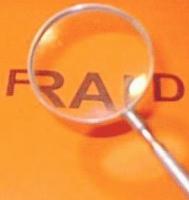Consumers are being sold food including mozzarella that is less than half real cheese, ham on pizzas that is either poultry or “meat emulsion”, and frozen prawns that are 50% water, according to tests by a public laboratory.
The checks on hundreds of food samples, which were taken in West Yorkshire, revealed that more than a third were not what they claimed to be, or were mislabelled in some way.  Their results have been shared with the Guardian.
Their results have been shared with the Guardian.
Testers also discovered beef mince adulterated with pork or poultry, and even a herbal slimming tea that was neither herb nor tea but glucose powder laced with a withdrawn prescription drug for obesity at 13 times the normal dose.
A third of fruit juices sampled were not what they claimed or had labelling errors. Two contained additives that are not permitted in the EU, including brominated vegetable oil, which is designed for use in flame retardants and linked to behavioural problems in rats at high doses.
Experts said they fear the alarming findings from 38% of 900 sample tests by West Yorkshire councils were representative of the picture nationally, with the public at increasing risk as budgets to detect fake or mislabelled foods plummet.
Counterfeit vodka sold by small shops remains a major problem, with several samples not meeting the percentage of alcohol laid down for the spirit. In one case, tests revealed that the “vodka” had been made not from alcohol derived from agricultural produce, as required, but from isopropanol, used in antifreeze and as an industrial solvent.
Samples were collected both as part of general surveillance of all foods and as part of a programme targeted at categories of foodstuffs where cutting corners is considered more  likely.
likely.
West Yorkshire’s public analyst, Dr Duncan Campbell, said of the findings: “We are routinely finding problems with more than a third of samples, which is disturbing at a time when the budget for food standards inspection and analysis is being cut.”
Ham, which should be made from the legs of pigs, was regularly made from poultry meat instead: the preservatives and brining process add a pink colour that makes it hard to detect except by laboratory analysis.
Meat emulsion – a mixture in which meat is finely ground along with additives so that fat can be dispersed through it – had also been used in some kinds of ham, as had mechanically separated meat, a slurry produced by removing scraps of meat from bones, which acts as a cheap filler although its use is not permitted in ham.
